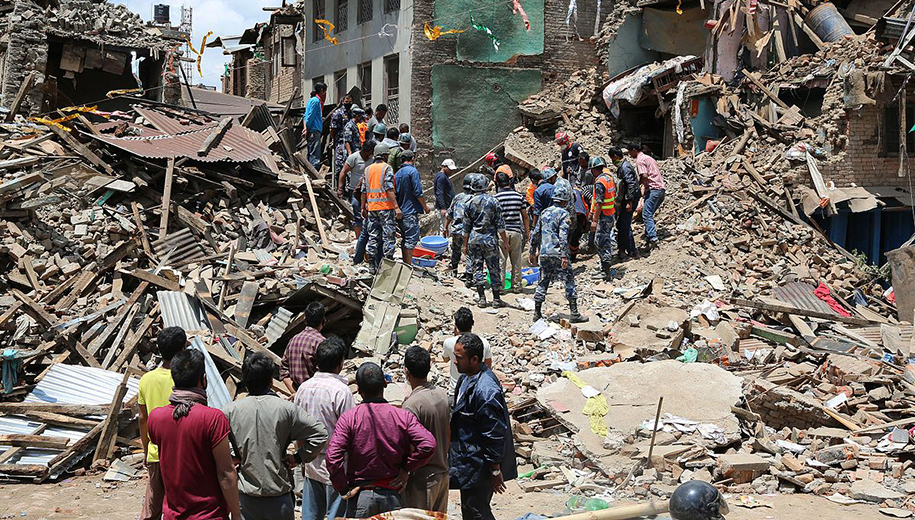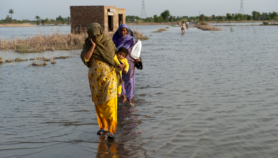01/04/20
Nepal’s lowland ‘food basket’ vulnerable to climate change

By: Saleem Shaikh
Send to a friend
The details you provide on this page will not be used to send unsolicited email, and will not be sold to a 3rd party. See privacy policy.
[ISLAMABAD] Disaster-prone Nepal’s southernmost lowland parts are less resilient to natural disasters than the sparsely-populated hilly and mountain areas, says a new study.
Published in Environmental Research and Public Health last month, the study is the first to assess community-scale disaster resilience across Nepal, whose densely populated lowlands represent some 17 per cent of the total land area but are inhabited by about 48 per cent of a population of 29 million people.
“Natural disasters and health emergencies are almost annual events in Nepal and represent a significant financial shock to the mountainous land-locked country”
Faris Hadad-Zervos, World Bank’s country manager for Nepal
“Natural disasters and health emergencies are almost annual events in Nepal and represent a significant financial shock to the mountainous land-locked country, as we have witnessed in the recent past,” says Faris Hadad-Zervos, World Bank’s country manager for Nepal as he signed, on 27 March, a US$50 million financing deal to enhance the Nepal government’s capacity to manage risks from climate change and natural disasters.
Sanam Aksha, lead author and researcher at the University of Central Florida's School of Public Administration and National Center for Integrated Coastal Research tells SciDev.Net that while the lowlands are known as the country’s ‘grain basket’ for its high agricultural productivity, their lower disaster resilience reduces overall ability to sustain food supplies and hunger and malnutrition eradication.
The lowlands suffer from being more densely populated, having higher population growth rates and haphazard migration and encroachment into marginal lands, says Aksha, adding there’s a lack of disaster-resilient public infrastructure, weak building constructions, ageing water and sanitation systems. Deforestation for agricultural activities on the lowland slopes have added to vulnerability.
Nepal is frequently hit by hazardous events. In 2015, a 7.8 magnitude of earthquake took about 9,000 lives and damaged over two million houses and critical infrastructures such as hospitals, roads and bridges. Monsoonal floods, landslides, land erosion and forest fires, cloudbursts and hailstorm events are regular events that impede economic activities.
Guided by the Disaster Resilience of Place model, the study selected 22 variables as indicators of social, economic, community, infrastructure, and environmental resilience to build a geospatial and visual depiction of community disaster resilience across Nepal.
The study can help decision-makers allocate scarce resources to increase resilience at the local level in the lowlands and achieve food security goals, says Aksha. “Measuring a community’s degree of resilience is a key starting point for framing strategies and taking actions toward the effective implementation of disaster risk reduction (DRR) programmes and policies that will help build community disaster resilience.”
The situation has become grim due to lack of DRR technical trainings at grassroots level for communities and local government officials, says Hadad-Zervos. “However, the study findings can prove instrumental for government authorities to roll out DRR programmes customised in a way suitable to village community needs by applying efforts and resources toward building resilient communities.”
This piece was produced by SciDev.Net’s Asia & Pacific desk.













